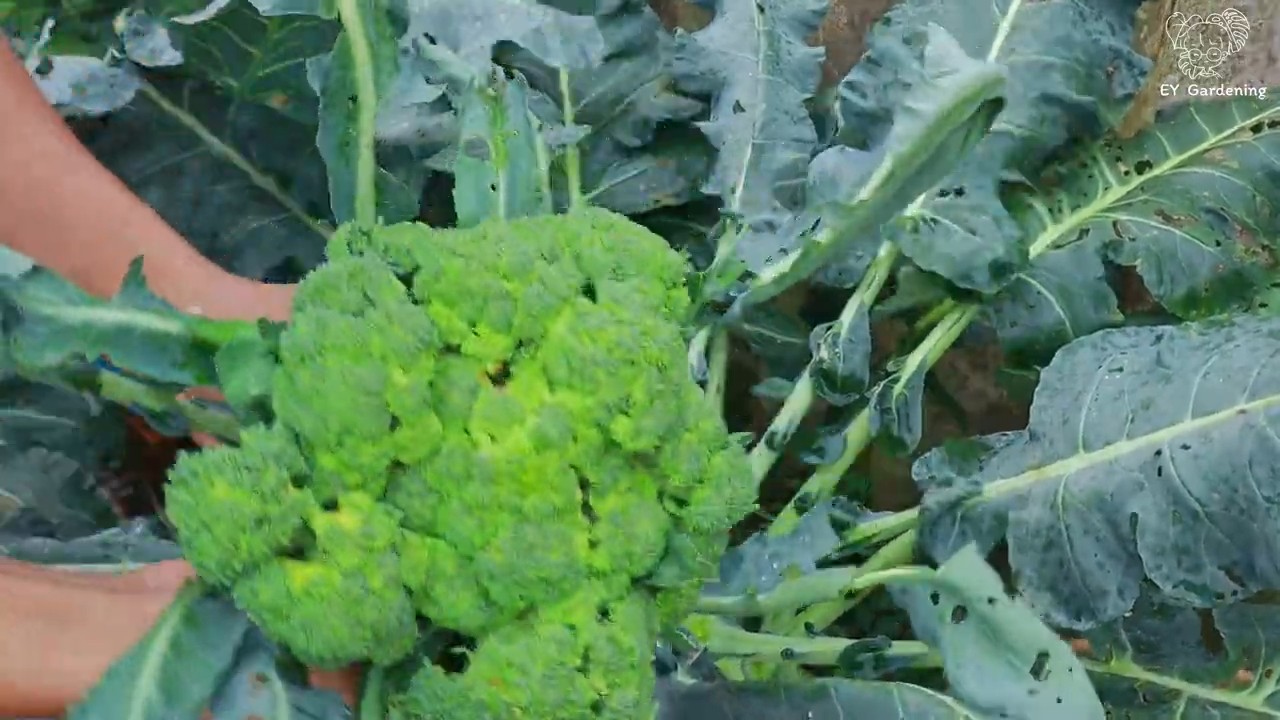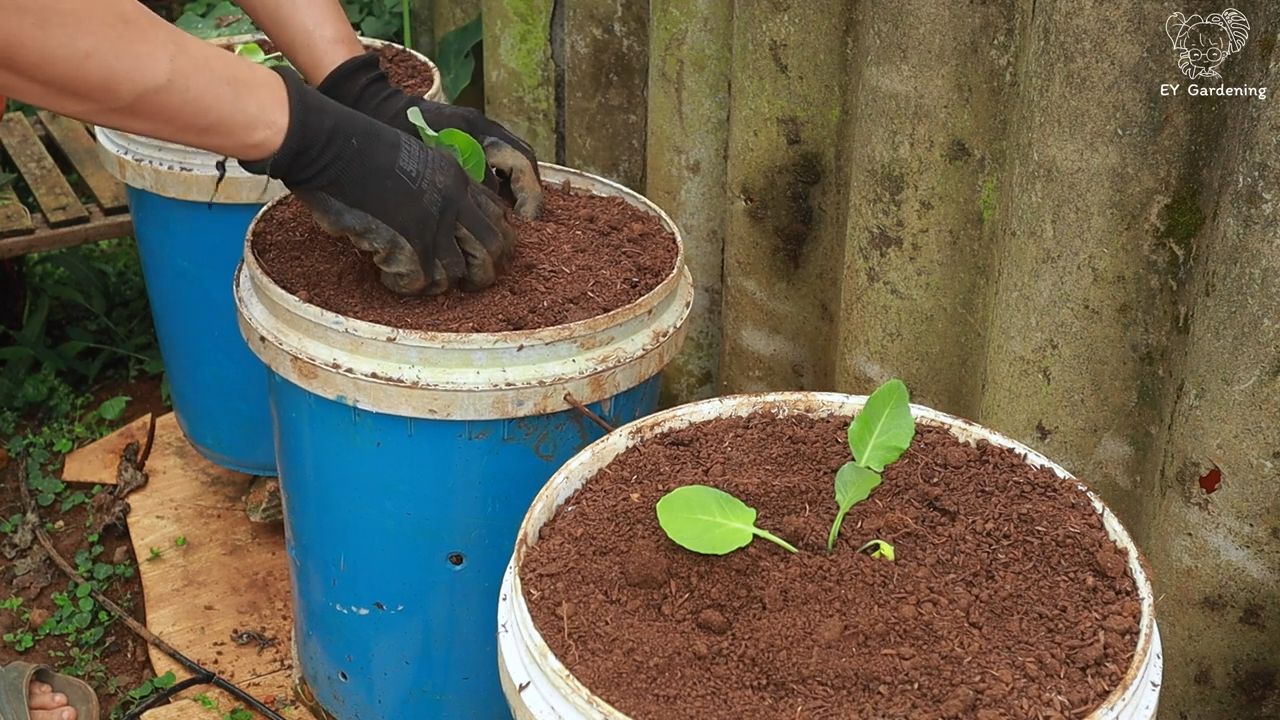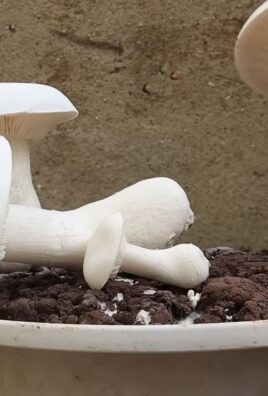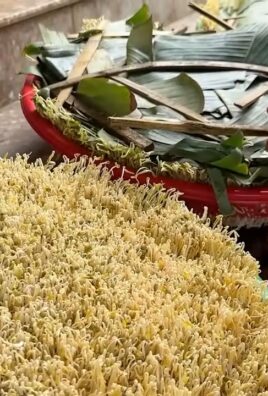Companion Planting Cauliflower Broccoli: Ever feel like your cauliflower and broccoli are locked in a silent battle for survival in your garden? I know I have! It’s frustrating to pour your heart and soul into nurturing these cruciferous veggies only to see them struggle. But what if I told you there’s a secret weapon, a time-tested technique that can transform your garden into a thriving ecosystem where cauliflower and broccoli flourish side-by-side?
The concept of companion planting isn’t new. In fact, indigenous cultures around the world have practiced it for centuries, understanding the intricate relationships between plants and how they can benefit each other. Think of it as creating a supportive community within your garden, where certain plants act as bodyguards, nutrient providers, or even pest repellents for your precious cauliflower and broccoli.
Why is this DIY trick so crucial? Well, let’s face it, gardening can be challenging! Pests, diseases, and nutrient deficiencies can wreak havoc on your crops. But by strategically implementing companion planting cauliflower broccoli techniques, you can naturally combat these issues, reduce your reliance on chemical pesticides and fertilizers, and ultimately, harvest a bountiful crop of delicious, healthy vegetables. So, let’s dive into the wonderful world of companion planting and unlock the secrets to a thriving cauliflower and broccoli garden!

Der ultimative Leitfaden zur Mischkultur von Blumenkohl und Brokkoli: Ein DIY-Projekt für deinen Garten
Hallo Gartenfreunde! Ich freue mich riesig, euch heute in die faszinierende Welt der Mischkultur von Blumenkohl und Brokkoli einzuführen. Vielleicht fragt ihr euch: “Was ist das überhaupt, und warum sollte ich das tun?” Nun, die Mischkultur ist im Grunde genommen eine clevere Strategie, bei der man verschiedene Pflanzen nebeneinander pflanzt, um von ihren gegenseitigen Vorteilen zu profitieren. Und glaubt mir, Blumenkohl und Brokkoli sind da keine Ausnahme!
Warum Mischkultur mit Blumenkohl und Brokkoli? Ganz einfach: Sie hilft, Schädlinge auf natürliche Weise abzuwehren, den Boden zu verbessern und sogar den Ertrag zu steigern. Klingt gut, oder? Also, lasst uns eintauchen und herausfinden, wie ihr das in eurem eigenen Garten umsetzen könnt.
Vorbereitung ist alles: Was du brauchst
Bevor wir loslegen, ist es wichtig, dass wir alles vorbereitet haben. Hier ist eine Liste der Dinge, die ihr benötigen werdet:
* Blumenkohl- und Brokkolisamen oder -setzlinge: Wählt Sorten, die für euer Klima geeignet sind.
* Geeignete Begleitpflanzen: Dazu kommen wir gleich noch!
* Gartenwerkzeug: Spaten, Harke, Pflanzkelle, Gießkanne.
* Kompost oder organischer Dünger: Für einen nährstoffreichen Boden.
* Mulch: Um die Feuchtigkeit zu speichern und Unkraut zu unterdrücken.
* Geduld und Begeisterung: Das Wichtigste überhaupt!
Die besten Begleitpflanzen für Blumenkohl und Brokkoli
Jetzt wird es spannend! Welche Pflanzen sind die besten Freunde für unseren Blumenkohl und Brokkoli? Hier sind einige meiner Favoriten:
* Aromatische Kräuter: Rosmarin, Salbei, Thymian und Pfeffermin. Sie verwirren Schädlinge mit ihrem Duft und ziehen nützliche Insekten an.
* Ringelblumen und Tagetes: Diese farbenfrohen Blumen sind natürliche Schädlingsbekämpfer und locken Bestäuber an.
* Knoblauch und Zwiebeln: Sie wehren Kohlweißlinge und andere Schädlinge ab.
* Dill: Zieht Marienkäfer an, die Blattläuse fressen.
* Spinat und Salat: Sie dienen als Bodendecker und helfen, Unkraut zu unterdrücken.
* Kapuzinerkresse: Sie dient als “Falle” für Schädlinge, die dann den Blumenkohl und Brokkoli in Ruhe lassen.
Schritt-für-Schritt-Anleitung zur Mischkultur
Okay, jetzt geht’s ans Eingemachte! Hier ist eine detaillierte Anleitung, wie ihr Blumenkohl und Brokkoli erfolgreich in Mischkultur anbauen könnt:
1. Standortwahl: Wählt einen sonnigen Standort mit mindestens 6 Stunden direkter Sonneneinstrahlung pro Tag. Blumenkohl und Brokkoli lieben die Sonne!
2. Bodenvorbereitung: Lockert den Boden gründlich auf und entfernt Steine und Unkraut. Mischt reichlich Kompost oder organischen Dünger unter, um den Boden mit Nährstoffen anzureichern. Ein gut vorbereiteter Boden ist das A und O für gesunde Pflanzen.
3. Pflanzabstand: Achtet auf den richtigen Pflanzabstand. Blumenkohl benötigt etwa 45-60 cm Platz zwischen den Pflanzen, Brokkoli etwa 30-45 cm. Die Begleitpflanzen könnt ihr dazwischen oder am Rand des Beetes pflanzen.
4. Pflanzen der Blumenkohl- und Brokkolisetzlinge: Grabt kleine Löcher, die etwas größer sind als die Wurzelballen der Setzlinge. Setzt die Setzlinge vorsichtig ein und drückt die Erde leicht an. Gießt die Pflanzen anschließend gründlich.
5. Pflanzen der Begleitpflanzen: Pflanzt eure ausgewählten Begleitpflanzen um den Blumenkohl und Brokkoli herum. Achtet darauf, dass sie den Hauptpflanzen nicht das Licht nehmen.
6. Bewässerung: Gießt die Pflanzen regelmäßig, besonders in trockenen Perioden. Blumenkohl und Brokkoli benötigen ausreichend Feuchtigkeit, um gut zu wachsen. Vermeidet aber Staunässe, da dies zu Wurzelfäule führen kann.
7. Mulchen: Tragt eine Schicht Mulch um die Pflanzen auf, um die Feuchtigkeit zu speichern, Unkraut zu unterdrücken und den Boden kühl zu halten. Stroh, Holzhackschnitzel oder Grasschnitt eignen sich gut als Mulchmaterial.
8. Düngung: Düngt die Pflanzen regelmäßig mit einem organischen Dünger, um sie mit ausreichend Nährstoffen zu versorgen. Achtet auf die Anweisungen auf der Verpackung.
9. Schädlingskontrolle: Kontrolliert die Pflanzen regelmäßig auf Schädlinge. Bei Bedarf könnt ihr natürliche Schädlingsbekämpfungsmittel wie Neemöl oder Insektizidseife verwenden. Die Begleitpflanzen helfen aber auch schon, Schädlinge fernzuhalten.
10. Ernte: Erntet den Blumenkohl und Brokkoli, sobald die Köpfe die gewünschte Größe erreicht haben. Schneidet die Köpfe mit einem scharfen Messer ab.
Spezifische Tipps für bestimmte Begleitpflanzen
Hier sind noch ein paar spezifische Tipps für einige meiner Lieblingsbegleitpflanzen:
* Kräuter: Pflanzt Kräuter wie Rosmarin, Salbei und Thymian in der Nähe von Blumenkohl und Brokkoli, um Kohlweißlinge und andere Schädlinge abzuwehren. Ihr Duft verwirrt die Schädlinge und macht es ihnen schwerer, die Pflanzen zu finden.
* Ringelblumen und Tagetes: Diese Blumen sind nicht nur schön anzusehen, sondern auch sehr nützlich im Gemüsegarten. Sie locken Bestäuber an und wehren Nematoden ab, die die Wurzeln der Pflanzen schädigen können.
* Knoblauch und Zwiebeln: Knoblauch und Zwiebeln sind natürliche Schädlingsbekämpfer. Sie enthalten Schwefelverbindungen, die Kohlweißlinge und andere Schädlinge abwehren. Pflanzt sie einfach zwischen den Blumenkohl und Brokkoli.
* Dill: Dill zieht Marienkäfer an, die Blattläuse fressen. Blattläuse können eine echte Plage für Blumenkohl und Brokkoli sein, daher ist es gut, natürliche Helfer im Garten zu haben.
* Spinat und Salat: Spinat und Salat dienen als Bodendecker und helfen, Unkraut zu unterdrücken. Sie konkurrieren mit dem Unkraut um Nährstoffe und Licht und halten den Boden feucht.
* Kapuzinerkresse: Kapuzinerkresse ist eine “Falle” für Schädlinge. Sie zieht Blattläuse und andere Schädlinge an, die dann den Blumenkohl und Brokkoli in Ruhe lassen. Pflanzt sie in der Nähe der Hauptpflanzen, um sie zu schützen.
Häufige Fehler vermeiden
Auch wenn die Mischkultur viele Vorteile bietet, gibt es ein paar Fehler, die ihr vermeiden solltet:
* Zu dichter Pflanzabstand: Achtet darauf, dass die Pflanzen genügend Platz haben, um zu wachsen. Ein zu dichter Pflanzabstand kann zu Krankheiten und Schädlingsbefall führen.
* Falsche Begleitpflanzen: Nicht alle Pflanzen sind gute Nachbarn. Vermeidet es, Blumenkohl und Brokkoli mit Pflanzen zu kombinieren, die ähnliche Nährstoffbedürfnisse haben oder Schädlinge anziehen.
* Vernachlässigung der Bewässerung: Blumenkohl und Brokkoli benötigen ausreichend Feuchtigkeit, um gut zu wachsen. Vernachlässigt die Bewässerung nicht, besonders in trockenen Perioden.
* Mangelnde Schädlingskontrolle: Kontrolliert die Pflanzen regelmäßig auf Schädlinge und ergreift bei Bedarf Maßnahmen. Je früher ihr Schädlinge entdeckt, desto einfacher ist es, sie zu bekämpfen.
Zusätzliche Tipps für einen erfolgreichen Anbau
Hier sind noch ein paar zusätzliche Tipps, die euch helfen können, Blumenkohl und Brokkoli erfolgreich in Mischkultur anzubauen:
* Bodenanalyse: Lasst euren Boden analysieren, um festzustellen, welche Nährstoffe fehlen. Passt die Düngung entsprechend an

Conclusion
So, there you have it! Mastering the art of companion planting cauliflower and broccoli isn’t just a gardening trend; it’s a game-changer for your vegetable patch. By strategically pairing these brassicas with beneficial neighbors, you’re not only creating a more vibrant and productive garden but also actively combating pests, improving soil health, and ultimately, harvesting healthier, more delicious crops.
Think of it as building a tiny, thriving ecosystem right in your backyard. The aromatic herbs deter cabbage moths, the legumes fix nitrogen in the soil, and the flowers attract beneficial insects that prey on aphids. It’s a beautiful, symbiotic relationship that benefits everyone involved – especially you, the gardener!
But don’t just take our word for it. The real magic happens when you put these principles into practice. Experiment with different combinations of companion plants to find what works best for your specific climate, soil type, and pest pressures. Perhaps you’ll discover that adding nasturtiums not only repels aphids but also adds a peppery zest to your salads. Or maybe you’ll find that interplanting dill with your broccoli attracts ladybugs like a magnet, keeping those pesky cabbage worms at bay.
Consider these variations to tailor the companion planting strategy to your specific needs:
* Succession Planting: Plant radishes between your cauliflower and broccoli rows. They mature quickly and can be harvested before the brassicas need the space, providing a continuous harvest and deterring flea beetles.
* Vertical Gardening: If space is limited, consider using trellises for climbing companions like peas or beans. This maximizes your growing area and provides shade for the base of your cauliflower and broccoli plants during hot summer days.
* Container Gardening: Companion planting isn’t just for in-ground gardens. You can successfully grow cauliflower and broccoli with companion plants in large containers. Choose dwarf varieties of brassicas and pair them with compact herbs like thyme or rosemary.
* Green Manure: Before planting your cauliflower and broccoli, consider planting a cover crop like clover or buckwheat. These “green manures” improve soil fertility and structure, providing a nutrient-rich foundation for your brassicas.
Remember, gardening is a journey of continuous learning and experimentation. Don’t be afraid to try new things, observe your plants closely, and adapt your strategies as needed. The rewards of companion planting – healthier plants, fewer pests, and a more bountiful harvest – are well worth the effort.
We are confident that by implementing these companion planting techniques, you’ll see a significant improvement in the health and yield of your cauliflower and broccoli crops. So, grab your gardening gloves, gather your seeds, and get ready to create a thriving, symbiotic garden that will be the envy of your neighborhood.
We’d love to hear about your experiences with companion planting cauliflower and broccoli! Share your successes, challenges, and favorite companion plant combinations in the comments below. Let’s learn from each other and create a community of thriving gardeners. Happy gardening!
Frequently Asked Questions (FAQ)
What exactly is companion planting and why is it beneficial for cauliflower and broccoli?
Companion planting is the practice of growing different plants together in close proximity to benefit one or both plants. For cauliflower and broccoli, this means strategically pairing them with plants that can deter pests, attract beneficial insects, improve soil health, or provide shade. The benefits are numerous: reduced pest infestations, increased yields, improved flavor, and a more sustainable gardening approach. It’s a natural way to enhance the growing environment for your brassicas.
Which plants are the best companions for cauliflower and broccoli?
Excellent companion plants for cauliflower and broccoli include:
* Aromatic Herbs (Rosemary, Thyme, Sage, Mint): These herbs deter cabbage moths, cabbage white butterflies, and other common brassica pests. Their strong scents confuse the pests, making it harder for them to find your plants.
* Legumes (Beans, Peas, Clover): Legumes fix nitrogen in the soil, providing a natural source of fertilizer for your cauliflower and broccoli. They also improve soil structure and drainage.
* Alliums (Onions, Garlic, Leeks): Alliums repel many pests, including aphids, cabbage root flies, and slugs. Their pungent odor acts as a natural deterrent.
* Flowers (Marigolds, Nasturtiums, Calendula): Marigolds repel nematodes and other soil pests. Nasturtiums attract aphids away from your brassicas and also attract beneficial insects like ladybugs and hoverflies. Calendula attracts pollinators and beneficial insects.
* Dill: Attracts beneficial insects like ladybugs and hoverflies, which prey on aphids and cabbage worms.
* Radishes: Act as a trap crop for flea beetles, drawing them away from your cauliflower and broccoli. They also mature quickly and can be harvested before the brassicas need the space.
Are there any plants I should avoid planting near cauliflower and broccoli?
Yes, some plants can negatively impact the growth of cauliflower and broccoli. Avoid planting these near your brassicas:
* Strawberries: Can stunt the growth of broccoli and cauliflower.
* Tomatoes: Compete for nutrients and can attract pests that also affect brassicas.
* Mustard: While sometimes used as a cover crop, it can attract cabbage white butterflies, which lay eggs that hatch into cabbage worms.
* Rue: Can inhibit the growth of brassicas.
How close should I plant companion plants to my cauliflower and broccoli?
The ideal spacing depends on the specific companion plants you’re using. As a general rule, plant herbs and flowers within 12-18 inches of your cauliflower and broccoli plants. Legumes can be planted in rows between the brassicas. Consider the mature size of each plant when determining spacing to ensure adequate sunlight and airflow.
Can I use companion planting in raised beds or containers?
Absolutely! Companion planting is just as effective in raised beds and containers as it is in in-ground gardens. Choose dwarf varieties of cauliflower and broccoli for containers and pair them with compact herbs and flowers. Ensure your containers are large enough to accommodate all the plants and provide adequate drainage.
How do I deal with pests even with companion planting?
While companion planting can significantly reduce pest problems, it’s not a foolproof solution. Monitor your plants regularly for signs of pests and diseases. If you notice an infestation, consider using organic pest control methods such as insecticidal soap, neem oil, or Bacillus thuringiensis (Bt). Handpicking pests is also an effective option for small infestations.
Does companion planting affect the taste of cauliflower and broccoli?
In some cases, companion planting can enhance the flavor of cauliflower and broccoli. For example, planting mint nearby may impart a subtle minty flavor to the brassicas. However, the effect is usually minimal and depends on the specific companion plants and growing conditions.
How long does it take to see the benefits of companion planting?
You may start to see some benefits of companion planting within a few weeks, such as reduced pest activity and improved plant vigor. However, the full benefits may not be apparent until later in the growing season. Be patient and continue to monitor your plants regularly.
What if I don’t have space for all the recommended companion plants?
Even planting just one or two companion plants can make a difference. Choose the companion plants that address your most pressing concerns, such as pest control or soil improvement. Every little bit helps!
Where can I find more information about companion planting?
There are many excellent resources available online and in libraries about companion planting. Look for books and articles specifically focused on companion planting for vegetables. Local gardening clubs and nurseries can also provide valuable information and advice.




Leave a Comment